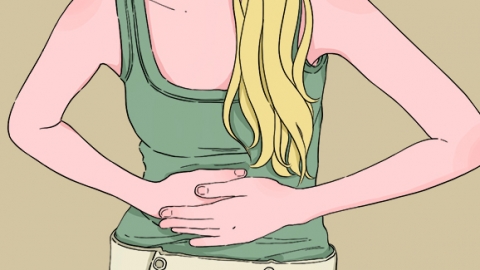What causes white, sticky discharge after menopause, and what should be done about it?
White, sticky discharge after menopause may be caused by hormonal fluctuations, poor hygiene habits, senile vaginitis, bacterial vaginosis, or fungal vaginitis. Symptoms can be improved through adjustments in hygiene practices, local care, and medication. If the discharge increases and is accompanied by odor or itching, prompt medical attention is recommended.
1. Hormonal fluctuations: After menopause, ovarian function declines and estrogen levels fluctuate, leading to changes in the characteristics of vaginal mucosal secretions. This often results in white, sticky discharge without a noticeable odor. It is advised to frequently change into clean cotton underwear, keep the external genital area dry, and avoid using irritating cleansers.
2. Poor hygiene habits: Long-term neglect of external genital hygiene can lead to accumulation of secretions, causing local irritation and worsening abnormal discharge, sometimes with mild discomfort. It is recommended to wash the external genital area daily with warm water, avoid douching, and wear loose, breathable clothing.

3. Senile vaginitis: After menopause, reduced estrogen levels cause the vaginal mucosa to thin and resistance to decrease, making it easier for bacterial infections to trigger inflammation. Discharge increases and becomes white and viscous, often accompanied by external genital itching. It is recommended to use medications such as conjugated estrogen cream, metronidazole suppositories, or lactobacillus vaginal capsules under medical guidance to relieve symptoms.
4. Bacterial vaginosis: Imbalance of vaginal flora, with overgrowth of bacteria such as Gardnerella, leads to increased white, paste-like discharge with a fishy odor. Treatment may include clindamycin gel, metronidazole tablets, or tinidazole suppositories as directed by a physician.
5. Fungal vaginitis (yeast infection): Overgrowth of Candida albicans causes inflammation, resulting in white, curd-like or thick discharge accompanied by burning and itching of the external genitalia. Follow medical advice to use clotrimazole suppositories, miconazole nitrate suppositories, or fluconazole capsules to alleviate symptoms.
Daily care tips: Maintain cleanliness and dryness of the external genital area, change underwear regularly, choose cotton and breathable fabrics, avoid frequent use of sanitary liners, eat a light diet, drink plenty of water, and reduce intake of spicy and irritating foods.




